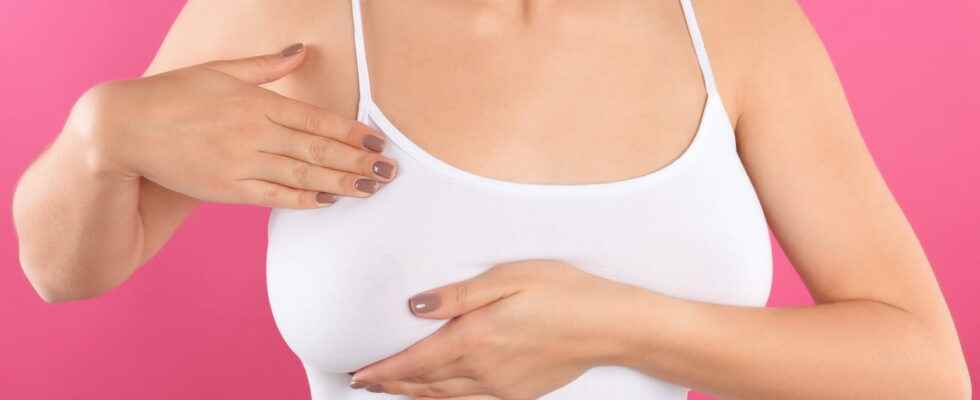Breast pain, or mastodynia, often reflects a hormonal imbalance. They can occur during puberty, premenstrual syndrome, pregnancy, but also pre-menopause. Should we be worried about it? How to relieve them? When to consult? Explanations with Dr. Odile Bagot, gynecologist.
Can breast pain be a sign of pre-menopause?
“In peri-menopause, or in menopausal transition, breast pain can occur due to an imbalance in the estrogen-progestogen balance: there is a lack of progesterone and there is a relative excess of estrogen, which hurts the breasts” says Dr. Odile Bagot, gynecologist. These last are heavy, painful, susceptible, as in premenstrual syndrome. Other signs are characteristic of menopausal transition cycles: rules that come too soon, who too abundantmood disorders, hot flashes, vaginal dryness, or sleep disorders.
Why do breasts hurt when you are in menopause?
“In complete, confirmed menopause, there can no longer be breast pain strictly speaking since the breasts react to estrogen, but by definition, there is no more estrogen at menopause” nuance the gynecologist. When pain occurs in the breasts after menopause, it is most often referred back painintercostal pain, heart or respiratory problems. “But the breast itself can no longer be painful in full menopause for hormonal reasons“she insists.
Does it last long?
If breast pain occurs during the menopausal transition phase, that we still have menstrual cycles, however anarchic they may be, the mastodynies last until the arrival of menstruation. It calms down and returns to the next cycle. In case of continuous pain attributed to the breasts while one is in complete menopause, it is necessary to consult to find the cause which is often not breast: it can come from the back, or be neuralgic.
What are the possible treatments ?
The treatment will depend on the cause of the pain. In menopausal transition, it is probably breast pain related to a hormonal imbalance. “To relieve symptoms, progesterone may be prescribed, either locally on the breast, or in the form of compressed to rebalance the estrogen-progestogen balance” inform our interlocutor. When it comes to continuous pain in post-menopause, the treatment depends on the cause. For example, in case of intercostal pain, analgesics and anti-inflammatories will be administered to calm the inflammation.
Thanks to Dr. Odile Bagot, gynecologist, author of “Endocrine disruptors, war is declared!”, Mango editions. She enriches her Facebook page every week with Mam Gyneco a new article or video.
